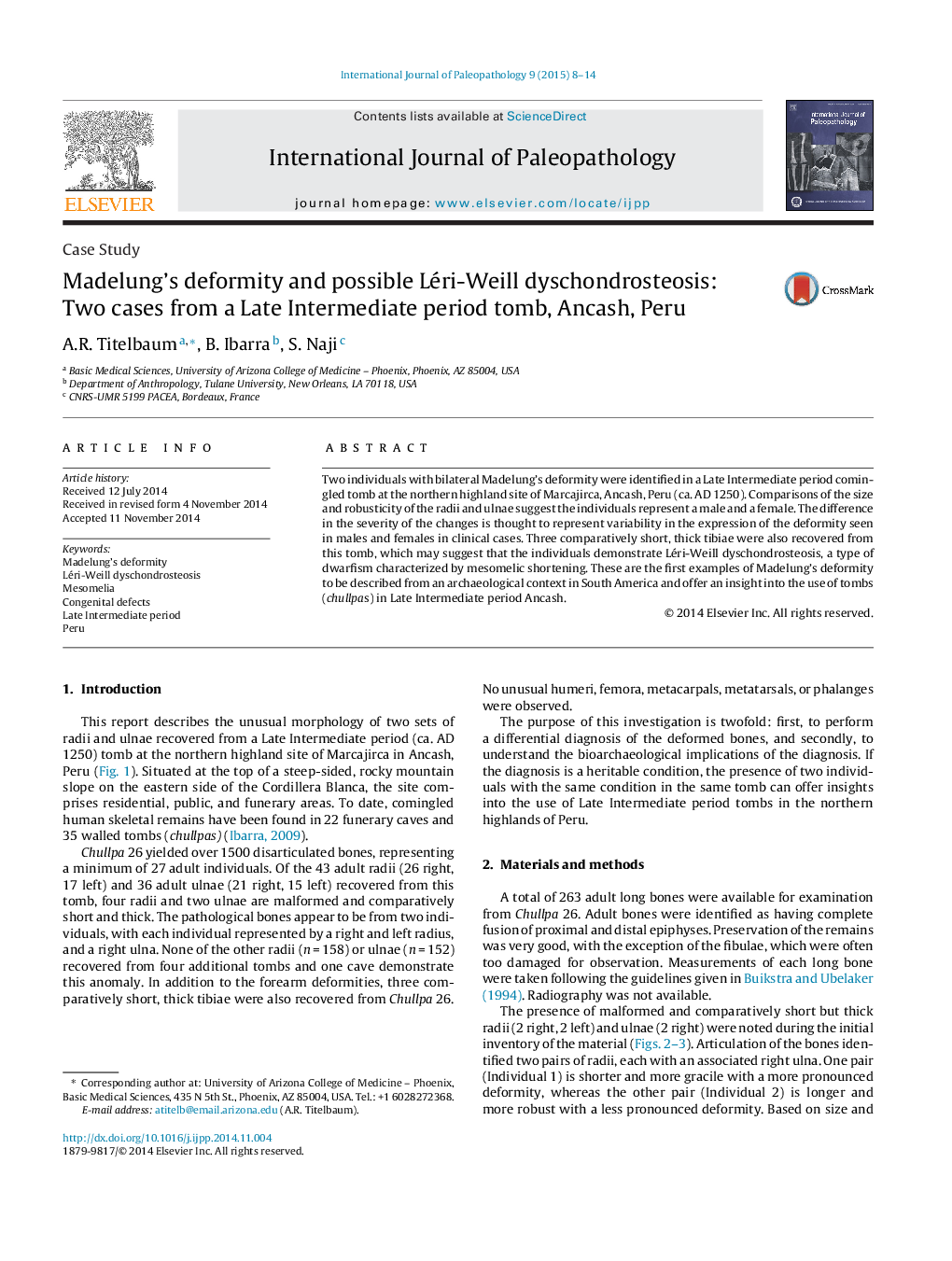| Article ID | Journal | Published Year | Pages | File Type |
|---|---|---|---|---|
| 101368 | International Journal of Paleopathology | 2015 | 7 Pages |
Two individuals with bilateral Madelung's deformity were identified in a Late Intermediate period comingled tomb at the northern highland site of Marcajirca, Ancash, Peru (ca. AD 1250). Comparisons of the size and robusticity of the radii and ulnae suggest the individuals represent a male and a female. The difference in the severity of the changes is thought to represent variability in the expression of the deformity seen in males and females in clinical cases. Three comparatively short, thick tibiae were also recovered from this tomb, which may suggest that the individuals demonstrate Léri-Weill dyschondrosteosis, a type of dwarfism characterized by mesomelic shortening. These are the first examples of Madelung's deformity to be described from an archaeological context in South America and offer an insight into the use of tombs (chullpas) in Late Intermediate period Ancash.
